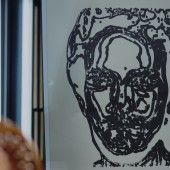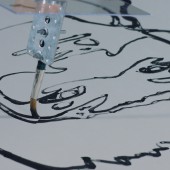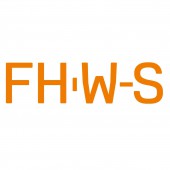ARTificial Autonomous Robot by Titus Ebbecke |
Home > Winners > #95165 |
 |
|
||||
| DESIGN DETAILS | |||||
| DESIGN NAME: ARTificial PRIMARY FUNCTION: Autonomous Robot INSPIRATION: Intelligence and consciousness seem to be almost exclusive to the human species. Similarly, the creation of art appears to be strongly bound to the intelligence of its author. This exclusivity between art creation and intelligence is so strong, that proving whether machines can be artists, is an essential step towards true artificial intelligence. As Art and intelligence still lack definitions, this project provokes discussions on whether this machine has these attributes. UNIQUE PROPERTIES / PROJECT DESCRIPTION: This robot is among the first fully autonomous machines which create art with barely any human authorship. Upon starting the system, the installation generates a completely new portrait with artificial intelligence. A novel algorithm converts the digital AI art into coordinates and the robot then paints it on canvas with acrylic. The sculpture works without human supervision and challenges the belief of art creation as a property of human or artificial intelligence. OPERATION / FLOW / INTERACTION: The key element of this project is its autonomy. The robot decides what to generate on a random basis and paints as it wishes. This is an attempt to emulate human artists and their creative freedom as much as possible. Two buttons need to be pressed and the robot will start to generate a random image, take paint, clean its brush and will continue to paint until the artwork is finished. PROJECT DURATION AND LOCATION: This bachelor thesis has been created from February 2019 to July 2019. It demonstrated its ability during a two-day exhibition in August 2019, where it painted over 10 hours in front of a hundred visitors. |
PRODUCTION / REALIZATION TECHNOLOGY: The images are created with a generative adversarial network. The algorithm is written in Python with OpenCV and NumPy. The KUKA robot and the computer are connected with an Ethernet connection. The custom made foundation has been created out of wood, concrete, and steel. A novel algorithm has been developed for this project. The robot is capable of painting unlimited images without human supervision. SPECIFICATIONS / TECHNICAL PROPERTIES: Dimensions: 3000 X 2000 X 1500mm Weight: 450kg TAGS: artificial intelligence, ai, generative art, robot, industrial robot, algorithmic, software engineering, installation, robot, gan, generative adversarial network RESEARCH ABSTRACT: This project is based on image synthesis with artificial intelligence and the combination of machine learning with robotics. A novel algorithm and method have been developed, to research whether art-creation can be linked to intelligence and if this sculpture qualifies as an authentic artist. This research has been conducted in cooperation with KUKA and was supervised under the head of corporate research. The algorithmic basis of this image-to-coordinate- CHALLENGE: This project required contacting a robot manufacturer, getting funds, transporting the robot and installing its numerous control interfaces. A foundation needed to be designed and constructed, to ensure the safe operation of this dangerous piece of industrial equipment. Finally, the author had to learn how to program a robot, as well as training the artificial Intelligence for multiple days on the most powerful GPU in existence and developing a completely novel algorithm for converting an AI image into coordinates in a safe manner. ADDED DATE: 2019-12-07 18:37:08 TEAM MEMBERS (1) : IMAGE CREDITS: Titus Ebbecke, 2019. |
||||
| Visit the following page to learn more: https://titusebbecke.com/artificial.html | |||||
| AWARD DETAILS | |
 |
Artificial Autonomous Robot by Titus Ebbecke is Winner in Robotics, Automaton and Automation Design Category, 2019 - 2020.· Read the interview with designer Titus Ebbecke for design ARTificial here.· Press Members: Login or Register to request an exclusive interview with Titus Ebbecke. · Click here to register inorder to view the profile and other works by Titus Ebbecke. |
| SOCIAL |
| + Add to Likes / Favorites | Send to My Email | Comment | Testimonials | View Press-Release | Press Kit |
Did you like Titus Ebbecke's Robotics Design?
You will most likely enjoy other award winning robotics design as well.
Click here to view more Award Winning Robotics Design.








